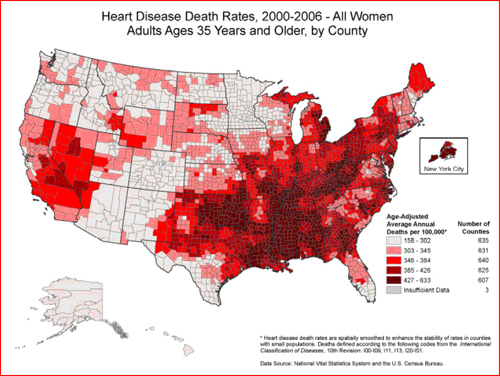Coronary Artery Disease: Women vs. Men
Coronary artery disease (CAD) is the leading cause of death in men and women in the United States. Of the 17.6 million people with CAD, 8 million are women.1,2 CAD is a serious and potentially deadly condition that claims the lives of more than 213,000 women each year, which is approximately five times the number of lives claimed by breast cancer.3

While men and women have an equal risk of heart disease, women are less likely to receive a timely diagnosis or receive optimal therapies and more likely to suffer fatal heart attacks.4 Why? Because in women with CAD, the heart becomes increasingly deprived of its oxygen-rich blood supply, often without symptoms.5 This oxygen deprivation is called cardiac ischemia and is caused by the growth of plaque in the coronary arteries, which consists of fat, cholesterol, calcium, and other substances found in the blood.6,7 Plaque formation and its components are different in women – artery plaque in women tends to be softer and more uniform inside the walls of coronary arteries while plaque in men forms more obvious clumps.8
This leads to women having fewer classic symptoms of CAD than men, such as chest pain on exertion, so women often delay seeking care. As a result, CAD in women can be more advanced when their disease is diagnosed.9 Furthermore:
- When women do have symptoms, they typically include unusual fatigue, shortness of breath and mild chest discomfort, and sometimes these symptoms are confused with panic attacks.10
- Common diagnostic tests can mask the severity of CAD in women. For example, electrocardiograms (ECGs) are usually inconclusive in women, and x-ray tests called angiograms can appear normal.11,12
- Too often, the first sign of CAD in women is a heart attack.13
Read more about CAD here and here.
Bypass Surgery to Treat CADThe three mainstays for treating CAD in both women and men are medicine, stenting and bypass surgery.
Out of these, bypass surgery has been the gold standard for 30 years for treating patients with more advanced CAD (i.e., those with blockages in two or more arteries or a blockage in the left main coronary artery). Approximately 300,000 bypass procedures are performed each year in the United States.
Bypass surgery can be performed in one of two ways:
- On-Pump Coronary Artery Bypass Surgery in which the heart is stopped and a cardiopulmonary bypass machine performs the job of the heart and lungs
- Off-Pump – or “Beating Heart” – Surgery in which the heart is not stopped and the heart and lungs continue to perform naturally
Read more about CAD treatment options here.



